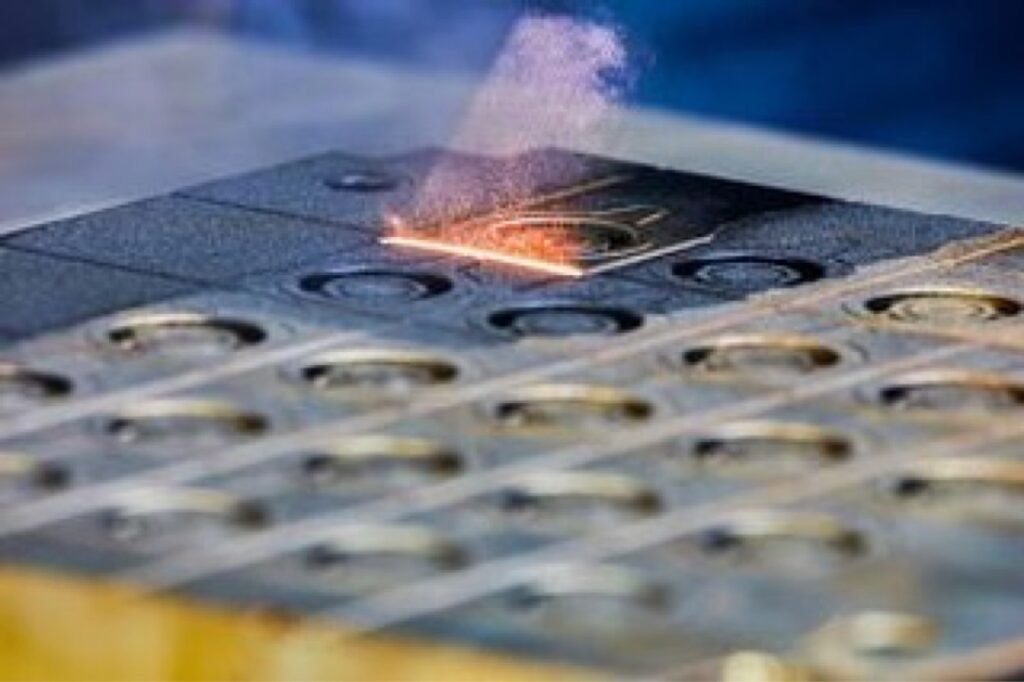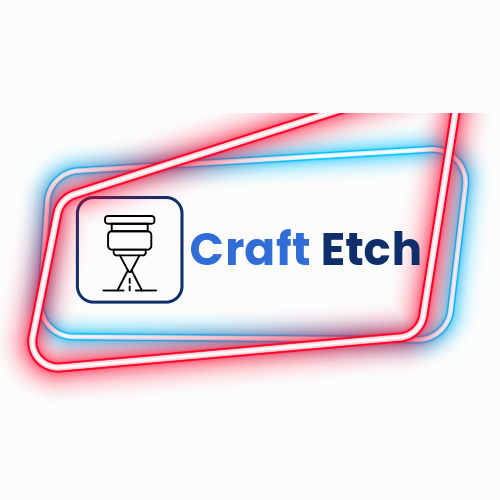Join Workshops
Physical Address
304 North Cardinal St.
Dorchester Center, MA 02124
Laser Ablation and Its Applications | In-Depth Guide
Laser ablation is a technique of removing a layer of the material using a laser beam. This precise technique has revolutionized various industries, from aerospace to medicine.
This guide will walk you through everything you need to know about laser ablation—from the basics of what it is to its diverse applications and the best equipment for the job.
We’ll also guide you through practical examples and research-backed insights to help you understand the full potential of ablation technology.
Key Takeaways:
- Understand the fundamentals of laser ablation and its operational steps.
- Learn which materials are best suited for laser ablation and the ideal laser machines for different applications.
- Explore the industrial applications of laser ablation, supported by practical examples and research studies.
- Gain insights into optimizing laser parameters for specific tasks and the role of exhaust systems in maintaining safety and efficiency.
- Discover the potential of laser ablation in medical applications and alternatives to this technology.
What is Laser Ablation?
Laser ablation is a precise material removal process using a controlled laser beam. Ablation helps remove a layer of the material and can entirely change the texture of the surface.
By focusing high-intensity laser light on a material (such as metal or plastic), the laser energy heats and vaporizes the target surface and removes layers or change the surface texture with extreme accuracy.
The ablation method is popular for its precision and ability to process a wide range of materials, including metals, ceramics, and polymers.
Numerous studies, such as those conducted by the University of California and MIT, have demonstrated the effectiveness of laser ablation in various applications such as micro-machining, surface cleaning, and medical procedures, highlighting its precision and versatility.

What Can You Do with Laser Ablation?
Laser ablation offers diverse applications, including micro-machining, surface cleaning, medical procedures, and electronic component manufacturing. It can effectively contribute to the aerospace, automotive, electronics, and medical fields.
For instance, in aerospace, laser ablation is used for coating removal and precision machining, as demonstrated by NASA’s research.
In the automotive industry, laser ablation is used for cleaning engine components, removing paint, and preparing surfaces for welding, ensuring high-quality and reliable parts.
Again with the laser ablation, you can clean any rusted material and give it a new appearance. The ablation also helps in the production of microelectronic devices, by creating intricate features on semiconductor wafers
In the medical field, laser ablation helps in precise surgical procedures, such as removing tumors and treating vascular lesions.
Moreover, in the manufacturing of electronic components, laser ablation is used to drill micro-holes and cut intricate patterns on printed circuit boards (PCBs), improving the performance and reliability of electronic devices.
In summary, the ablation procedure allows you to utilize the laser mechanism wherever you want.
How Can You Do Laser Ablation?
Laser ablation involves a series of steps, from material preparation to post-ablation processing, that must be carefully followed to achieve optimal results. Here’s a step-by-step guide:
- Preparation: Ensure you have a suitable laser machine, a stable work environment, and proper safety gear, including protective eyewear and ventilation systems.
- Material Setup: Position the material on the work surface and secure it to prevent movement. For instance, if you are working with aluminum, ensure it is clamped firmly.
- Laser Configuration: Adjust the laser’s focus to the surface of the material. Set the laser parameters, including power, pulse duration, and repetition rate, based on the material and desired outcome. For example, when working with copper, you might set the power to 50 watts, a pulse duration of 10 nanoseconds, and a repetition rate of 20 kHz.
- Execution: Initiate the laser ablation process and monitor it closely. Use appropriate exhaust systems to remove fumes and debris. Studies have shown that continuous monitoring can significantly improve the precision and quality of the ablation process.
- Post-Processing: After the ablation is complete, inspect the material for accuracy and quality. Additional cleaning or processing may be required to achieve the desired finish.
Which Materials Can Be Used for Laser Ablation?
Laser ablation is versatile and can be applied to various materials such as metal, ceramics, polymers, and other biological materials.
Here is a table categorizing materials by type and ablation process:
| Material Type | Example Materials | Ablation Type | Practical Implication |
|---|---|---|---|
| Metals | Aluminum, Copper, Steel | Surface cleaning, engraving | High precision needed for aerospace parts |
| Ceramics | Alumina, Zirconia | Micro-machining | Creating dental implants |
| Polymers | Polyimide, Polyethylene | Surface modification | Enhancing adhesion in automotive parts |
| Biological | Tissues, Bones | Surgical removal | Minimally invasive surgeries |
Each category requires specific laser settings and adjustments, as highlighted in research conducted by universities such as Stanford and Harvard.
Which Laser Machines Can Perform Ablation?
Various laser machines such as fiber laser, CO2 laser, and Ultrafast lasers can perform ablation, each suited to different materials and applications:
- Fiber Lasers: Ideal for metals, fiber lasers offer high precision and efficiency. For its peak frequency and pulse rate, ablation gets easy in metal items with fiber lasers.
For example, fiber laser machines are extensively used in the automotive industry for cutting and welding parts. Studies, such as those from the Technical University of Munich, show that fiber lasers provide excellent beam quality and stability compared to other types of laser. - CO2 Lasers: Effective for non-metal materials like plastics and wood, CO2 lasers are commonly used in engraving and cutting applications. However, they have limitations in processing ablation on metals due to their longer wavelengths. (we will clarify this in later part).
- Ultrafast Lasers: Known for their short pulse durations, ultrafast lasers minimize heat-affected zones and are ideal for delicate materials. They are used in electronics manufacturing for precise micro-machining.
Why fiber laser is best to perform ablation?
Fiber lasers are considered the best for laser ablation, particularly for tasks like rust removal and texture changing, due to their superior beam quality, high power density, and efficiency.
Research conducted by the Technical University of Munich highlights that fiber lasers produce a focused, high-intensity beam that can precisely target rust without damaging the underlying metal. This is mainly done by the fiber laser’s wavelength and other parameters that are unavailable in other types of lasers.
In a comparative study, fiber lasers demonstrated a rust removal rate of up to 1 cm² per second at a power setting of 20 watts and a pulse duration of 100 nanoseconds. This efficiency is significantly higher than that of traditional CO2 lasers, which struggle with metallic surfaces due to their longer wavelengths.
Furthermore, fiber lasers can change material texture effectively because of their ability to deliver short, high-energy pulses that can create detailed and consistent surface patterns.
Studies from the Fraunhofer Institute for Laser Technology show that fiber lasers can achieve surface texturing with resolutions as fine as 10 micrometers, crucial for applications requiring precise control over surface properties.
Can You Perform Laser Ablation Using a CO2 Laser?
Yes, CO2 lasers can perform laser ablation, especially on non-metal materials like plastics, glass, and ceramics. However, they have limitations in processing metals due to their longer wavelengths, which are less effective in penetrating metallic surfaces.
For example, CO2 lasers struggle with precise ablation of steel or copper, whereas fiber lasers are very efficient.
Let’s consider the process of laser ablation in ceramics, specifically alumina, using a CO2 laser.
A CO2 laser, operating at a wavelength of 10.6 micrometers, can effectively remove material from the ceramic surface. During the ablation process, the laser energy, generated by the laser beam, is absorbed by the ceramic, causing rapid heating and vaporization of the material. This could achieve a material removal rate of approximately 0.5 mm³ per minute at a power setting of 30 watts.
However, this process often results in significant thermal damage, including micro-cracking and chipping, due to the high heat input and longer wavelength of the CO2 laser.
In contrast, fiber lasers typically operate at a wavelength of 1.06 micrometers, which is more controlled and precise.
For example, fiber lasers achieve a higher material removal rate of up to 1 mm³ per minute with the same power setting of 30 watts.
The shorter wavelength of fiber lasers allows for better absorption by the ceramic material, resulting in more efficient energy transfer and less thermal damage. For more, you can read the research from the Fraunhofer Institute for Laser Technology on this matter.
Is Laser Ablation and Laser Cutting the Same?
Laser ablation and laser cutting are related but the operation is different. In short, laser cutting refers to cutting a material using a laser beam whereas ablation involves removing a layer of the material with the same laser beam, but with different settings.
So, laser cutting slices through the entire thickness of a material to separate pieces, commonly used in manufacturing for creating parts.
Laser ablation, on the other hand, removes surface layers (can be rust removal, or texture modification), and is often used for surface modification, cleaning, or precise material removal without cutting through.
That means, both the laser cutting and laser ablation are two different operations done by the same laser machines, but with different application patterns.
What are the Relationships Between Ablation and Laser Marking?
Laser ablation and laser marking are interconnected as both involve material interaction with a laser beam. Laser marking refers to placing a pattern on the surface of the material without altering or removing any part of that particular material. For example, placing holograms on metal parts is done through a metal marking process.
Laser ablation, on the other hand, can create marks by selectively removing material layers, resulting in high-contrast, precise markings.
It means, the ablation process first removes a layer of the metal by either vaporizing or surface cutting.
And, laser marking typically focuses on creating visible marks without significant material removal.
What are the Differences Between Laser Engraving and Ablation?
Laser engraving and ablation differ in depth and application.
Laser engraving typically involves deeper, more permanent marks on a material’s surface, used for decorative or identification purposes. For example, think about engraving your logo in wood with a deeper cut.
Laser ablation, on the other hand, is a more controlled removal process, often used for precise machining, cleaning, or surface modification. Such as removing the rusty appearance of the metal surface.
How Can You Do Metal Cleaning with Ablation?
Metal cleaning with laser ablation involves using a laser to remove contaminants, oxides, or coatings from metal surfaces.
To remove metal rust with the fiber laser, you need to adjust the laser’s power and focus to target the unwanted material without damaging the substrate.
For effective results, set the laser power between 20 to 50 watts and adjust the pulse duration to match the contaminant type.
Employing a slow scan speed can ensure thorough cleaning. Performing a test run on a small area to fine-tune settings can help a lot. Using a fume extractor to manage debris is a must.
To remove rust, set the laser power to 20-50 watts with shorter pulse durations (e.g., 50-100 nanoseconds).
Adjust the repetition rate to balance between speed and precision. A rate of 20-50 kHz is often suitable for cleaning tasks.
Here’s how fiber laser removes metal rust using the ablation mechanism.

How Can You Do Texturing Using a Laser?
Laser texturing involves creating specific surface patterns using controlled laser ablation. For metal, must use a a Q-switched pulse laser.
By adjusting the laser’s parameters, you can produce various textures, from fine grooves to complex patterns.
For effective texturing, use a power setting between 10 to 30 watts and a pulse duration of 10-20 nanoseconds.
Employing a high repetition rate, such as 50 kHz, can enhance texture uniformity.
Strategies include conducting test patterns on sample materials to determine the best settings and using software to design intricate textures.
Which Laser Parameters Do You Need to Understand to Perform Ablation?
Key laser parameters for ablation include:
- Power: Affects the ablation rate. Higher power increases material removal speed but can also cause more heat damage.
- Pulse Duration: Influences precision. Shorter pulses (nanoseconds to femtoseconds) minimize thermal effects and improve accuracy. For instance, femtosecond lasers are used for delicate applications like eye surgery.
- Repetition Rate: Impacts processing speed. Higher repetition rates allow for faster ablation but may reduce precision. A repetition rate of 20 kHz is suitable for general cleaning, while higher rates are used for fine texturing.
- Wavelength: Determines material compatibility. Different materials absorb different wavelengths. For example, metals often require shorter wavelengths (e.g., 1.06 microns for fiber lasers), while plastics absorb longer wavelengths (e.g., 10.6 microns for CO2 lasers).
What is the Ablation Threshold?
The ablation threshold is the minimum laser energy required to remove material from a surface.
The ablation threshold varies with material properties and laser parameters.
For instance, research from the University of Cambridge shows that the ablation threshold for aluminum is approximately 1.5 J/cm².
Understanding the ablation threshold helps in setting the correct laser settings to achieve desired outcomes without damaging the substrate.
Here’s a table showcasing the ablation thresholds for various materials, categorized by type and specific applications:
| Material Type | Material | Application | Ablation Threshold (J/cm²) | Research/Source |
|---|---|---|---|---|
| Metals | Aluminum | Micro-machining | 1.5 | University of Cambridge |
| Copper | Surface cleaning | 1.2 | Technical University of Munich | |
| Steel | Rust removal | 2.0 | Fraunhofer Institute | |
| Ceramics | Alumina | Micro-machining | 3.5 | University of California |
| Zirconia | Surface texturing | 4.0 | Stanford University | |
| Polymers | Polyimide | Electronic component fabrication | 0.6 | MIT |
| Polyethylene | Surface modification | 0.8 | Harvard University | |
| Biological | Tissue | Medical procedures | 0.2 | Johns Hopkins University |
| Bone | Surgical removal | 0.5 | Mayo Clinic |
What is an Ultrafast Laser Pulse?
An ultrafast laser pulse has an extremely short duration, typically in the femtosecond to picosecond range.
These pulses minimize heat diffusion, allowing for precise material removal with minimal thermal damage. Ultrafast lasers are ideal for applications requiring high precision and intricate details.
How Do Exhaust and Fume Extractors Contribute to Laser Ablation?
Exhaust and fume extractors are crucial in laser ablation for maintaining a clean and safe work environment.
They remove hazardous fumes, particles, and debris generated during the process, protecting both the operator and the laser equipment.
Effective extraction systems enhance visibility and prevent contamination, ensuring consistent results.
How Fast Can You Do Laser Ablation?
The speed of laser ablation depends on the laser power, material type, and desired precision.
High-power lasers can ablate materials quickly, but speed must be balanced with accuracy and quality.
For example, removing rust from a steel surface with a fiber laser (20 watts, 50 kHz) can be completed at a rate of 1 cm² per second, as shown in practical illustrations. Optimizing parameters allows for efficient ablation while maintaining precision.
How Does Laser Ablation Contribute to the Medical Sector?
In the medical sector, laser ablation is used for precise surgeries, such as removing tumors or correcting vision.
Its accuracy minimizes damage to surrounding tissues, promoting faster recovery.
For instance, research from Johns Hopkins University demonstrates the effectiveness of laser ablation in minimally invasive brain surgeries. Laser ablation is also employed in dermatology for removing skin lesions and in dentistry for cavity preparation.
Is There an Alternative to Laser Ablation?
Alternatives to laser ablation include mechanical machining, chemical etching, and plasma treatment. Each method has its advantages and limitations, but laser ablation is often preferred for its precision, versatility, and non-contact nature.
What is a Burst Mode Laser?
A burst mode laser emits a series of rapid pulses in a short time frame, enhancing ablation efficiency. This mode allows for higher material removal rates and improved surface quality, making it suitable for applications requiring fine details and minimal thermal impact.



